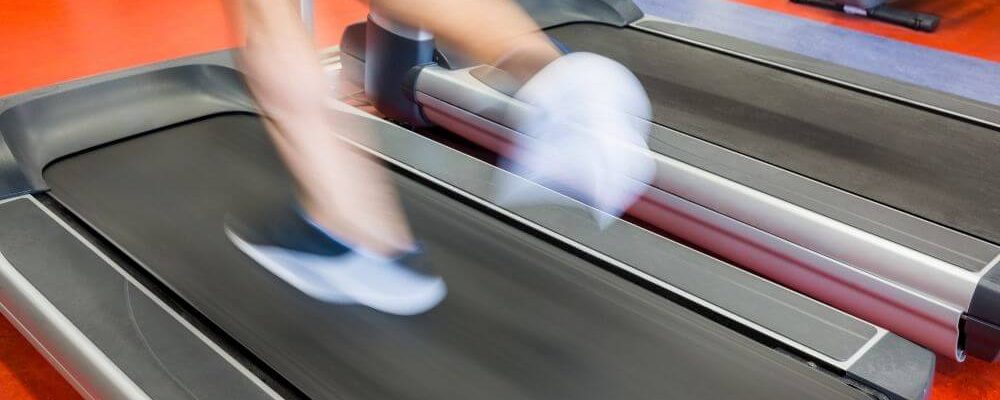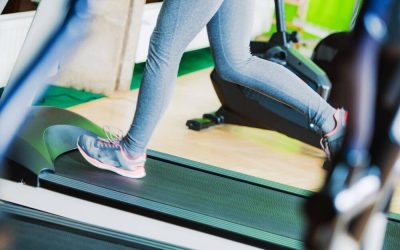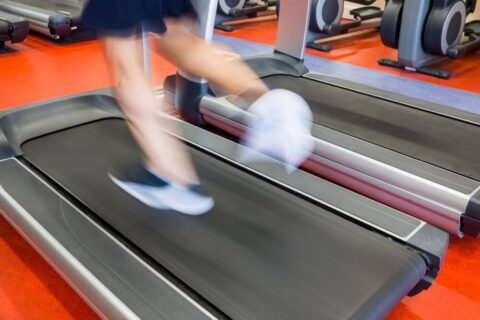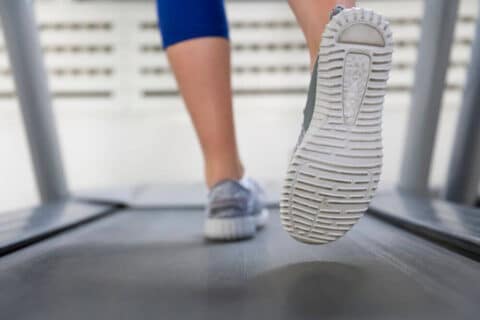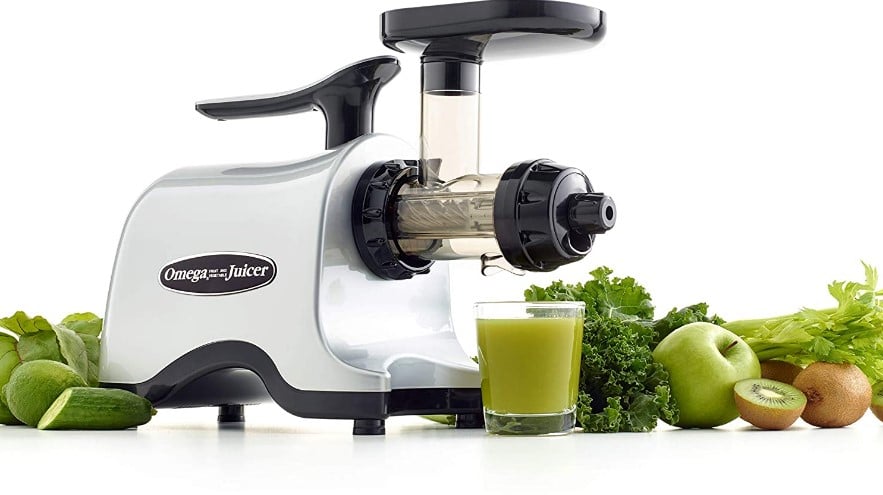Treadmill speed is measured in miles per hour (mph). Treadmills are typically designed to provide varying speed options for users to choose from based on their fitness goals and preferences.
With the ability to adjust the speed, individuals can control the intensity of their workouts and gradually increase their endurance. Whether walking, jogging, or running, the treadmill speed can be easily adjusted according to the desired pace. Understanding how treadmill speed is measured helps users track their progress and set new challenges for themselves.
By increasing the speed over time, individuals can challenge their cardiovascular endurance and burn more calories during their workout sessions.

Contents
Understanding Treadmill Speed Measurement
Treadmill speed is typically measured in miles per hour (mph) or kilometers per hour (km/h), providing users a clear understanding of their pace while exercising on the machine. By tracking speed, individuals can monitor their progress and tailor their workouts to meet their fitness goals.
The Importance of Measuring Treadmill Speed
When it comes to using a treadmill, understanding how the speed is measured is essential to achieving your fitness goals effectively. Treadmill speed measurement allows you to track progress, set achievable targets, and tailor your workouts to your specific needs.
Here are the key points to grasp when it comes to measuring treadmill speed:
- Treadmill Speed Display: Treadmills typically feature a digital display that indicates the current speed at which you are walking, jogging, or running. This display is usually presented in miles per hour (mph) or kilometers per hour (km/h), depending on the unit of measurement selected.
- Manual vs. Automated Adjustment: Some treadmills require manual adjustment of the speed, where you need to press buttons or turn knobs to increase or decrease the speed. Others have automated adjustment capabilities, allowing you to set a specific speed and let the treadmill adjust accordingly.
- Speed Increments: Treadmills usually have adjustable speed increments, which enable you to fine-tune the intensity of your workout. Common speed increments range from 0.1 mph to 0.5 mph (or their equivalent in km/h), offering precise control over the pace.
- Maximum Speed: Each treadmill comes with a maximum speed limit that it can reach. This limit varies depending on the model and brand. Being aware of this limit is crucial, especially if you are an experienced runner or looking for high-intensity training.
- Speed Calibration: Treadmills sometimes require calibration to ensure accurate speed measurement. Calibration involves comparing the measurement on the treadmill with a known external reference, verifying its accuracy. Following the manufacturer’s instructions for calibration is crucial to maintain precise speed measurements.
- Incline and Speed Relationship: It’s important to note that as the treadmill incline increases, the required speed effort increases. This means that if you set a higher incline, you might need to lower your speed to maintain the same level of exertion.
- Personalized Speed Targets: Measuring your treadmill speed allows you to set personal speed targets based on your fitness level and goals. Whether you aim to improve your endurance, burn calories, or boost your cardiovascular fitness, having precise speed measurements helps you monitor your progress effectively.
Understanding how treadmill speed is measured, and the various factors involved allows you to utilize this information to enhance your workouts. By familiarizing yourself with speed measurement, you can optimize your treadmill sessions, ensuring you are on track to reaching your desired fitness outcomes.

Exploring Metric Measurements
Treadmill speed is measured in metric units, specifically kilometers per hour (km/h). It is essential to understand the metric measurements used in order to track and adjust your running or walking pace accurately on a treadmill.
Read More: Best Treadmills for Running in 2023
Metric Measurement Systems For Treadmill Speed
Treadmill speed is an important factor to consider when achieving your fitness goals. While most people are familiar with speed measurements in miles per hour (mph) or kilometers per hour (KPH), treadmills also offer metric measurement systems for speed.
Here, we will explore the metric measurement systems used for treadmill speed and how they can benefit you.
- Kilometers Per Hour (KPH): One of the most commonly used metric measurement systems for treadmill speed is kilometers per hour (KPH). This system measures the distance you would cover if you walk or run for one hour at a consistent pace. KPH is popular in countries primarily using the metric system, providing a familiar and easily understandable measurement.
- Meters Per Minute (m/min): Another commonly used metric measurement system for treadmill speed is meters per minute (m/min). This measurement indicates the distance covered in meters within a minute. It offers a more granular view of your speed, allowing precise control and tracking of your treadmill workouts.
Converting Metric Speed To Imperial Speed
If you are more comfortable with imperial speed measurements, converting the metric speed displayed on treadmills to the units you prefer is possible. Here’s how you can make this conversion:
- Kilometers per Hour (KPH) to Miles per Hour (mph): To convert KPH to mph, you can multiply the KPH value by 0.6214. For example, if your treadmill shows a speed of 10 KPH, multiplying it by 0.6214 means you will find that your speed is approximately 6.214 mph.
- Meters per Minute (m/min) to Miles per Hour (mph): To convert m/min to mph, you can use the following formula: mph = (m/min 0.03728). For example, if your treadmill displays a speed of 500 m/min, by multiplying it by 0.03728, you will find that your speed is approximately 18.64 mph.

Benefits Of Using Metric Speed Measurements On Treadmills
There are several benefits to using metric speed measurements on treadmills, regardless of whether you typically use the metric or imperial system. These benefits include:
- Worldwide Consistency: As many countries around the world use the metric system, using metric speed measurements ensures compatibility with international standards. This is especially useful for individuals who travel and use different gym facilities or treadmills in various locations.
- Clearer and More Precise Measurement: Metric speed measurements, such as KPH or m/min, can provide a more precise representation of your speed, allowing for better tracking and monitoring of your workout progress. The granular nature of these measurements can be particularly beneficial for athletes or those aiming for specific training goals.
- Avoiding Conversions: Using metric speed measurements eliminates the need for frequent conversions between different unit systems. This saves time and ensures accuracy in tracking your treadmill workouts.
- Broadens Your Understanding: Familiarizing yourself with metric speed measurements expands your knowledge of different measurement systems. This can benefit both fitness settings and daily life, where metric measurements may be encountered in various contexts.
Metric measurement systems like KPH and m/min provide clear and precise speed measurements on treadmills. Converting between metric and imperial speed measurements is possible. Using metric measurements offers several benefits, such as worldwide consistency, clearer and more precise tracking, avoiding conversions, and broadening your understanding of different measurement systems.
Deciphering Imperial Measurements
Treadmill speed is measured in miles per hour (mph) or kilometers per hour (km/h), depending on the unit of measurement used in your region. Whether you are a beginner or an experienced runner, understanding treadmill speed is crucial for setting and achieving your fitness goals.
Imperial Units Of Measurement For Treadmill Speed
Treadmill speed can be measured using various units of measurement, depending on the region and the treadmill model. This section will focus on the imperial units of measurement used for treadmill speed. Here are the key points to understand about these measurements:
- Miles per hour (mph): A commonly used unit for measuring treadmill speed in countries that follow the imperial system. It represents the distance traveled in miles in one hour.
- Feet per minute (ft/min): Another unit used to measure treadmill speed, where it represents the distance covered in feet in one minute.
- Kilometers per hour (km/h): While not an imperial unit, it is worth mentioning that some treadmills can also display speed in kilometers per hour, particularly in countries that follow the metric system.

Advantages And Disadvantages Of Imperial Speed Measurements
Like any measurement system, there are advantages and disadvantages to using imperial speed measurements for treadmills. Here are the key points to consider:
Advantages:
- Familiarity: In regions that predominantly use the imperial system, people are more accustomed to understanding and interpreting speeds in miles per hour.
- Accessibility: The majority of treadmills manufactured for the residential market readily display speed in miles per hour, making it easier for users to monitor and adjust their pace accordingly.
Disadvantages:
- Lack of precision: Imperial speed measurements often offer limited decimal places, resulting in a less precise representation of speed than metric measurements.
- Conversion complexities: If you are accustomed to metric units or need to compare treadmill speeds with international standards, converting from imperial to metric can be challenging.
Converting Imperial Speed To Metric Speed
Converting treadmill speed from imperial to metric can be useful in certain situations. Here’s how you can make the conversion:
- Miles per hour (mph) to kilometers per hour (km/h): Multiply the miles per hour by a conversion factor of 1.609 to obtain the equivalent speed in kilometers per hour.
- Feet per minute (ft/min) to kilometers per hour (km/h): First, calculate the speed in feet per hour by multiplying the speed in feet per minute by 60. Then, divide the speed in feet per hour by 3280.84 to get the speed in kilometers per hour.
By converting imperial speed measurements to metric, you can better understand your treadmill speed and compare it with international standards if needed.
Remember, understanding the units of measurement for treadmill speed is essential for tracking your progress, setting goals, and adjusting your workout intensity. Whether you prefer miles per hour or kilometers per hour, knowing how to interpret and convert between different speed measurements will help you optimize your treadmill workouts.
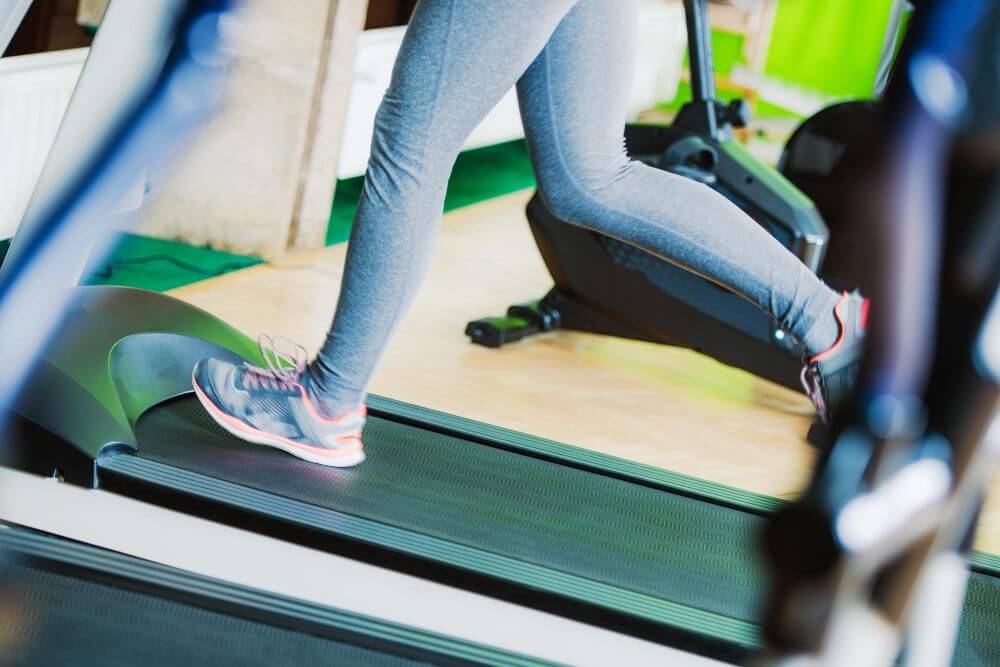
Comparative Analysis: Metric Vs. Imperial
Treadmill speed can be measured either in metric or imperial units. The choice between the two depends on individual preferences and familiarity with the measurement system.
Treadmills are a popular choice for indoor workouts, whether you’re aiming for a quick jog or a high-intensity run. But have you ever wondered how treadmill speed is measured? In this section, we will delve into the comparative analysis of metric and imperial speed measurements, exploring the pros and cons of each system, as well as the factors to consider when choosing the right measurement system.
Pros And Cons Of Metric And Imperial Speed Measurements
When it comes to measuring treadmill speed, there are two main systems in use: metric and imperial. Let’s take a closer look at the pros and cons of each:
Metric Speed Measurements:
- Consistent and universally understood: Metric measurements, such as kilometers per hour (km/h), are widely used globally. This makes it easier to compare speeds among different individuals and fitness programs.
- Better accuracy for smaller increments: Metric speed measurements provide a finer level of precision, especially for slower speeds. This can benefit individuals who prefer a more nuanced approach to their workouts.
- Commonly used in scientific research: The metric system is commonly used in scientific studies and research, allowing for easier comparisons and analysis of data related to treadmill speeds.
Imperial Speed Measurements:
- Familiarity for some users: In countries like the United States, imperial speed measurements such as miles per hour (mph) are more familiar to many individuals. For those accustomed to imperial measurements, it can be more convenient to gauge their treadmill speed using a familiar unit.
- Tradition in some fitness programs: Certain fitness programs and training methods may still utilize imperial speed measurements. If you follow a specific program that uses imperial units, sticking with these measurements for consistency might be more practical.
- Limited worldwide recognition: While imperial measurements may be popular in certain regions, they are not as widely recognized or used internationally. This can make it challenging to compare your treadmill speed with others from around the world.

Factors To Consider For Choosing The Right Speed Measurement System:
When deciding whether to use metric or imperial speed measurements on your treadmill, consider the following factors:
- Personal preference and familiarity: If you have a personal preference or are more comfortable with a particular speed measurement system, it might be easier to stick with what you are familiar with.
- Fitness goals and programs: Consider the fitness goals you have set for yourself and the training programs you follow. Some fitness programs may have specific speed targets that are easier to achieve using a certain system.
- International compatibility: If you travel frequently or plan to compare your treadmill speed with individuals from different countries, metric speed measurements may be more practical due to their universal recognition.
- Accuracy and precision: If you prefer a more precise measurement system, especially for slower speeds, the metric system provides a finer level of accuracy.
Choosing the right speed measurement system for your treadmill workouts ultimately comes down to personal preference and individual factors such as familiarity, fitness goals, and international compatibility. Whether you opt for metric or imperial measurements, what matters most is finding a system that helps you track your progress and achieve your fitness goals effectively.
Impact Of Treadmill Speed Metrics On Workouts
Treadmill speed is typically measured in miles per hour (mph), providing valuable metrics for workouts. These speed measurements help users track their progress, set goals, and tailor their workouts to achieve optimal results.
How Speed Metrics Affect Cardiovascular Health And Fitness Goals:
- Pace Matters: The speed metrics on a treadmill play a crucial role in determining the intensity and effectiveness of your workout. Whether you’re a beginner aiming for a light jog or an advanced runner looking for a high-intensity sprint, understanding how speed affects your cardiovascular health and fitness goals is essential.
- Target Heart Rate: Different speed settings on a treadmill can help you maintain or push your heart rate within a specific range. Your target heart rate zone, based on your age and fitness level, determines the intensity you should exercise. Adjusting the speed accordingly allows you to optimize cardiovascular health and improve endurance.
- Burn More Calories: The speed at which you run or walk on a treadmill directly impacts the calories burned during your workout. Increasing speed increases energy expenditure and enables you to achieve weight loss goals more effectively. However, it’s important to find a balance that aligns with your fitness abilities to avoid overexertion or injury.
- Cardiovascular Endurance: Regularly incorporating higher speed intervals into your treadmill workouts can significantly improve cardiovascular endurance. By challenging your heart and lungs faster, you enhance their capacity to supply oxygen-rich blood to your muscles more efficiently. This can lead to improved stamina and overall fitness performance.
Optimizing Speed Metrics For Different Workout Intensities:
- Interval Training: Altering your treadmill speed metrics effectively incorporates interval training into your routine. Interval training involves alternating between periods of high intensity and recovery. Adjusting the speed settings accordingly allows you to push yourself during the high-intensity intervals and then recover at a slower pace to maximize your workout’s impact.
- Building Strength: Varying your treadmill speed metrics allows you to target different muscle groups and build strength. Running or walking at a slower pace with a higher incline emphasizes your leg muscles, promoting muscular endurance and lower-body strength. Alternatively, increasing the speed can engage your fast-twitch muscle fibers and enhance power and explosive strength.
- Improving Speed and Agility: If your fitness goals involve improving your speed and agility, incorporating speed training on a treadmill is highly beneficial. By gradually increasing the speed metrics, you can train your body to move faster and react quickly. This can be especially valuable for athletes who require quick movements, such as soccer, basketball, or tennis.
- Avoiding Plateaus: Plateaus are common in any fitness journey, where progress stagnates. Utilizing different speed metrics on a treadmill can help you break through plateaus by continually challenging your body in new ways. By consistently adjusting speeds, your body doesn’t get accustomed to a steady pace, allowing you to continuously improve your fitness levels.
Remember, when it comes to optimizing your treadmill workouts, experimenting and listening to your body are key. Gradually increasing the speed metrics while considering your fitness goals and abilities will ensure a safe and effective workout. Enjoy the journey and witness the positive impact on your cardiovascular health and fitness goals!

Popular Treadmill Speed Metrics
Treadmill speed is measured in popular metrics like miles per hour (mph) or kilometers per hour (km/h). These metrics help users track their running pace and intensity on the treadmill.
Overview Of Popular Speed Metrics Used On Treadmills
Treadmills are popular for cardio workouts at home or in the gym. But have you ever wondered how treadmill speed is measured? Let’s dive in and take a closer look:
- Miles Per Hour (mph): One of the most widely recognized speed metrics, miles per hour is commonly used on treadmills. It indicates the miles you would cover if you maintain the same speed for an hour. For instance, if you set the treadmill to 6 mph, you would cover 6 miles in one hour.
- Kilometers Per Hour (km/h): While miles per hour is the predominant speed metric in the United States, kilometers per hour is commonly used in countries following the metric system. Similar to mph, km/h represents the distance you would cover in kilometers if you maintained a constant speed for an hour.
- Minutes Per Mile or Kilometer (min/mi or min/km): This speed metric provides the average time it would take to complete one mile or kilometer. For instance, if your treadmill displays a pace of 10 min/mi, it would take approximately 10 minutes to finish one mile. This metric is useful for tracking speed improvements over time.
- Feet Per Minute (ft/min): In some cases, treadmills may also display the speed in feet per minute. This metric measures the distance covered in feet if you maintain the same speed for a minute.
Exploring The Applications Of Different Speed Metrics
Now that we have an overview of popular speed metrics used on treadmills let’s delve into their applications in different contexts. Understanding the relevant applications can help you choose the most suitable speed metric for your workout goals. Here are some scenarios where the various speed metrics can come in handy:
- Training for Races: Knowing your pace in minutes per mile or kilometer can be invaluable if you’re preparing for a race, such as a marathon. You can set your treadmill to match your target pace and train accordingly.
- International Comparisons: If you frequently travel internationally or prefer following the metric system, using kilometers per hour on the treadmill can easily align with your preferences.
- Progress Tracking: By monitoring your speed in miles or kilometers per hour, you can track your progress over time. Increasing speed or reducing your time per mile/kilometer can help you achieve your fitness goals.
- Safety Considerations: Feet per minute can be a useful metric in certain instances, particularly for individuals with specific needs. For example, physical therapists might use this metric to gradually increase a patient’s walking speed during rehabilitation sessions.
- Personal Preference: Ultimately, the choice of speed metric also comes down to personal preference. Some individuals may find it easier to grasp the concept of miles per hour, while others might prefer kilometers per hour.
Remember, these speed metrics are just tools to help you measure and track your progress. Whether you aim to improve your endurance, increase your speed, or enjoy a good workout, understanding how treadmill speed is measured can enhance your overall experience.
FAQs: What Is Treadmill Speed Measured In
How Fast Is 7.0 On A Treadmill?
7. 0 on a treadmill is a moderate speed for walking or jogging. It is equivalent to a pace of around 4 to 5 miles per hour (mph). This pace is comfortable for most people and can be a good starting point for beginners looking to increase their stamina and fitness levels.
Walking or jogging at 7. 0 on a treadmill can help burn calories, improve cardiovascular health, and strengthen leg muscles. It is important to listen to your body and adjust the speed as needed. Remember to warm up and cool down before and after your exercise session to prevent injury.
So, if you’re looking for a moderate workout on a treadmill, 7. 0 is a good speed to aim for.
Is The Speed On A Treadmill Mph Or Km?
The speed on a treadmill can be measured in either mph (miles per hour) or km (kilometers).
How Fast Is 8.0 On Treadmill?
8. 0 on a treadmill is a fairly fast speed. It is commonly used for running and can provide a challenging workout. You can expect to get your heart rate up and burn calories effectively at this pace. It is important to note that everyone’s fitness level is different so the speed may differ for each person.
It is recommended to start slow and gradually increase the speed to avoid injuries. Remember to listen to your body and adjust the speed accordingly. Keep in mind that safety is paramount, so always use caution when using the treadmill at higher speeds.
How Fast Is 10 Mph On Treadmill?
10 mph on a treadmill is a moderate running speed. It is equivalent to running a 6-minute mile pace. Treadmills typically have speed settings that range from 0 to 12 mph, with some models offering higher speeds. Running at 10 mph can be challenging for beginners but is attainable with practice.
It provides a good cardiovascular workout and can help burn calories. Remember to warm up before starting any treadmill workout and gradually increase the speed to avoid injury.
Final Words
Understanding how treadmill speed is measured is crucial for anyone who wants to get the most out of their workouts. By knowing the different units of measurement, like miles per hour (mph), kilometers per hour (km/h), and meters per minute (m/min), individuals can set their desired pace and track their progress effectively.
Additionally, familiarizing oneself with the treadmill’s various speed settings and adjustment options can help optimize performance and prevent injury. Whether you’re a beginner or an experienced athlete, controlling and monitoring treadmill speed accurately is essential for achieving specific fitness goals.
So, take the time to learn about the different measurement units, experiment with speed settings, and challenge yourself to push beyond your limits. With this knowledge, you can make the most of your treadmill workouts and improve your overall fitness level.

